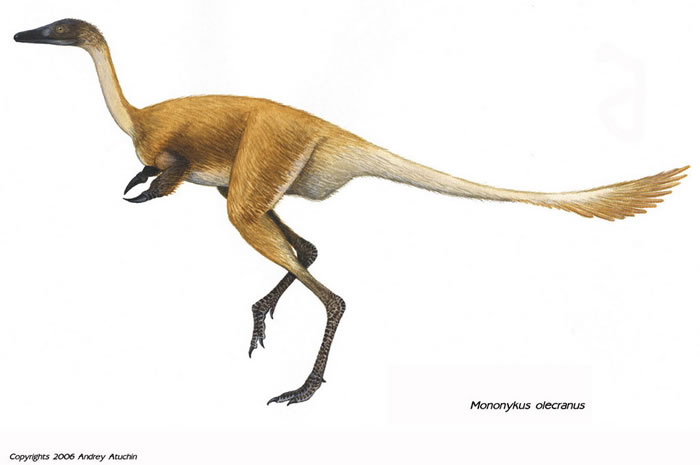
http://www.sciencemag.org/cgi/content/full/327/5965/571Jonah N. Choiniere, X. Xu, J.M. Clark, C.A. Forster, Y. Guo, F. Han. 2010. A
Basal Alvarezsauroid Theropod from the Early Late Jurassic of Xinjiang,
China. Science 327:571-574 DOI: 10.1126/science.1182143The fossil record of Jurassic theropod dinosaurs closely related to birds remains poor. A new theropod from the earliest Late Jurassic of western China represents the earliest diverging member of the enigmatic theropod group Alvarezsauroidea and confirms that this group is a basal member of Maniraptora, the clade containing birds and their closest theropod relatives. It extends the fossil record of Alvarezsauroidea by 63 million years and provides evidence for maniraptorans earlier in the fossil record than Archaeopteryx. The new taxon confirms extreme morphological convergence between birds and derived alvarezsauroids and illuminates incipient stages of the highly modified alvarezsaurid forelimb.
A newly discovered dinosaur species is helping paleontologists figure out how bird-like characteristics evolved in dinosaurs that aren't directly related to birds.The dinosaur, Haplocheirus sollers, was three-metres long with short, powerful arms and three claws on each hand. It is an early member of the alvarezsaur family, a strange group of dinosaurs characterized by stubby forelimbs and hands reduced to a single claw.Haplocheirus is 63 million years older than any other members of its family, helping to clear up the evolution of the meat-eating dinosaurs, the theropods, which includes velociraptors and T. rex."Haplocheirus is a transitional fossil, because it shows an early evolutionary step in how the bizarre hands of later alvarezsaurs evolved from earlier predatory dinosaurs," said Jonah Choiniere of George Washington University, in a statement.

4 comments:
Looks a bit like a kangaroo
Thanks for sharing such a pleasant opinion, post is pleasant, thats why i have read it completely
my page; read what they said about it
curry 5
kd 12
adidas tubular
yeezy shoes
lebron james shoes
golden gooses sneakers
jordan shoes
air max 95
christian louboutin shoes
golden goose outlet
nike max
yeezys
golden goose
fitflops sale clearance
kd 12
jordan shoes
adidas tubular
yeezy
retro jordans
off white nike
Post a Comment